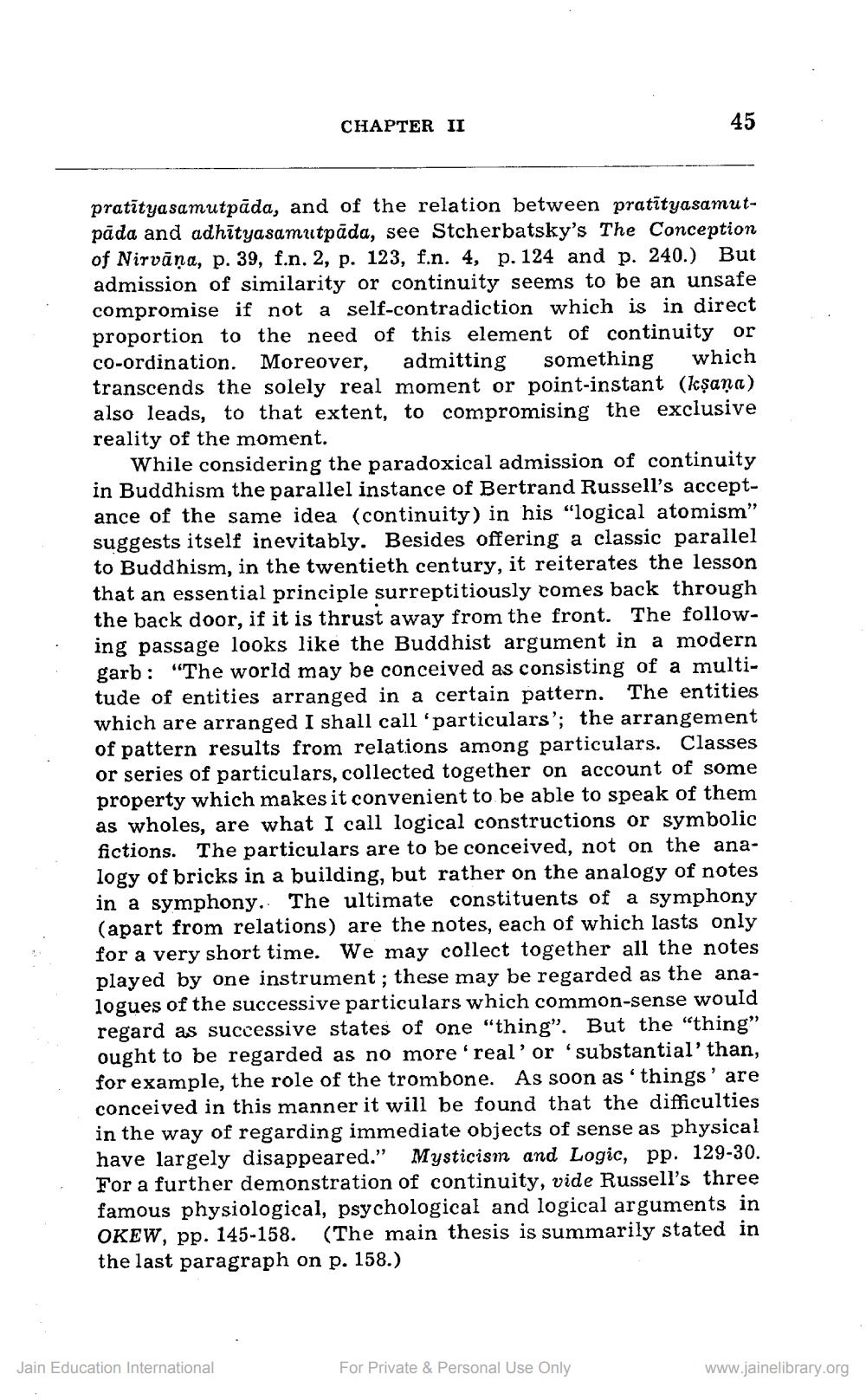________________
CHAPTER II
pratītyasamutpāda, and of the relation between pratītyasamutpada and adhityasamutpäda, see Stcherbatsky's The Conception of Nirvāņa, p. 39, f.n. 2, p. 123, f.n. 4, p. 124 and p. 240.) But admission of similarity or continuity seems to be an unsafe compromise if not a self-contradiction which is in direct proportion to the need of this element of continuity or co-ordination. Moreover, admitting something which transcends the solely real moment or point-instant (kşaņa) also leads, to that extent, to compromising the exclusive reality of the moment.
While considering the paradoxical admission of continuity in Buddhism the parallel instance of Bertrand Russell's acceptance of the same idea (continuity) in his “logical atomism" suggests itself inevitably. Besides offering a classic parallel to Buddhism, in the twentieth century, it reiterates the lesson that an essential principle surreptitiously comes back through the back door, if it is thrust away from the front. The following passage looks like the Buddhist argument in a modern garb: "The world may be conceived as consisting of a multitude of entities arranged in a certain pattern. The entities which are arranged I shall call 'particulars'; the arrangement of pattern results from relations among particulars. Classes or series of particulars, collected together on account of some property which makes it convenient to be able to speak of them as wholes, are what I call logical constructions or symbolic fictions. The particulars are to be conceived, not on the analogy of bricks in a building, but rather on the analogy of notes in a symphony. The ultimate constituents of a symphony (apart from relations) are the notes, each of which lasts only for a very short time. We may collect together all the notes played by one instrument; these may be regarded as the analogues of the successive particulars which common-sense would regard as successive states of one "thing". But the "thing" ought to be regarded as no more 'real' or 'substantial'than, for example, the role of the trombone. As soon as 'things' are conceived in this manner it will be found that the difficulties in the way of regarding immediate objects of sense as physical have largely disappeared.” Mysticism and Logic, pp. 129-30. For a further demonstration of continuity, vide Russell's three famous physiological, psychological and logical arguments in OKEW, pp. 145-158. (The main thesis is summarily stated in the last paragraph on p. 158.)
Jain Education International
For Private & Personal Use Only
www.jainelibrary.org




